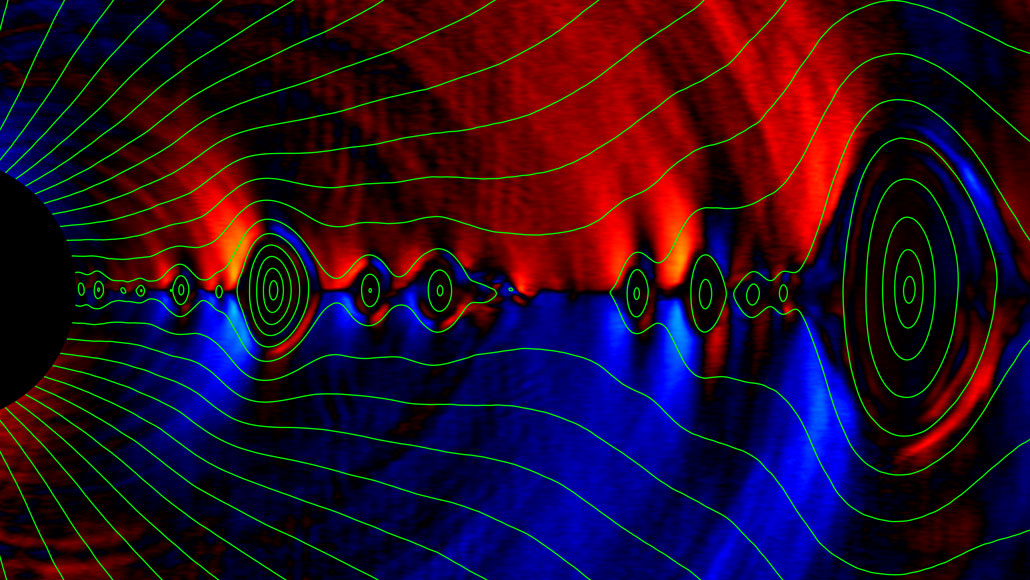
A black hole (left in this simulation) will cast off its magnetic field (indicated with green lines) when surrounded by moving plasma (velocity indicated in red and blue). Small loops of the magnetic field encapsulate blobs of plasma, some of which are expelled from the black hole while others fall into it.
A. Bransgrove et al/PRL 2021







